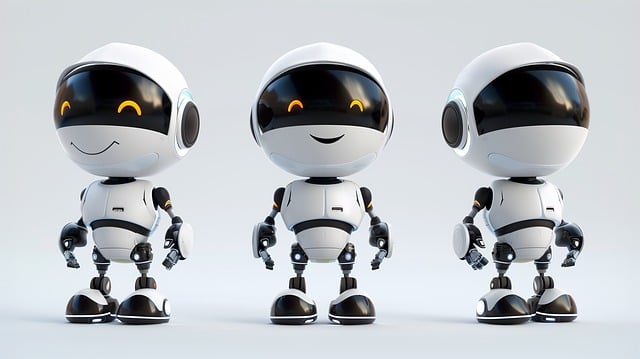In today’s fast-paced digital landscape, businesses are increasingly leveraging AI chatbots to enhance customer service experiences. This article delves into the transformative role of live chat chatbots, exploring their inner workings and the best strategies for their deployment. From understanding the AI behind these conversational agents to optimizing their performance in real-time environments, this guide illuminates ‘AI chatbots’ as a game-changing tool for modern customer interaction. Join us as we navigate ‘The Architecture of Live Chat Bots: How They Work and Learn,’ and learn how to effectively implement these intelligent systems with our section ‘Best Practices for Implementing and Optimizing Your AI Chatbot.’
- Understanding AI Chatbots: Revolutionizing Customer Service
- The Architecture of Live Chat Bots: How They Work and Learn
- Best Practices for Implementing and Optimizing Your AI Chatbot in Real-Time Environments
Understanding AI Chatbots: Revolutionizing Customer Service

AI chatbots represent a significant leap forward in customer service technology, redefining the way businesses interact with their clientele. These intelligent systems leverage advanced algorithms and natural language processing capabilities to understand, interpret, and respond to user queries in real-time. By integrating AI chatbots into various platforms, companies can provide instantaneous support, 24/7 availability, and personalized experiences that cater to individual customer needs. The deployment of these chatbots has led to a marked improvement in response times and service quality, as they can handle multiple interactions simultaneously without the constraints of human work hours or productivity limits. Furthermore, AI chatbots are constantly learning from each interaction, which enables them to become more efficient and accurate over time. This continuous learning process means that customer service is not only streamlined but also evolves with the feedback and usage patterns, ensuring a dynamic and responsive support system that can adapt to changing demands and trends. Businesses that adopt AI chatbots can expect to see enhanced customer satisfaction, reduced operational costs, and a significant competitive edge in their respective markets.
The Architecture of Live Chat Bots: How They Work and Learn

AI chatbots are sophisticated software systems designed to simulate human conversation through text or voice interactions. At their core, these chatbots utilize a combination of technologies including natural language processing (NLP), machine learning (ML), and sometimes deep learning algorithms. The architecture of live chat bots can be understood as comprising several distinct layers: input interfaces, preprocessing, language understanding, dialogue management, and output generation.
The input interface is the point of interaction where users type their queries. This interface captures and processes user inputs, which are then fed into the preprocessing stage. Here, text undergoes normalization and tokenization to prepare it for NLP algorithms that follow. Language understanding components, such as semantic parsers, entity recognition systems, and sentiment analysis tools, work in tandem to comprehend the context, intent, and emotion behind user messages. This understanding is crucial for effective communication and enabling the chatbot to respond appropriately.
Dialogue management is where the AI chatbot decides on the next action to take based on the conversation’s flow and context. It involves retrieving and updating the context of a conversation stored in memory, planning the dialogue move by move, and often integrating with external APIs or databases for real-time information. Machine learning plays a pivotal role here, as chatbots learn from past interactions to improve their performance over time. The output generation layer translates the chatbot’s decision into human-readable text or speech, ensuring that the user receives coherent and contextually relevant responses. This iterative process of interaction, learning, and response optimization is what allows AI chatbots to evolve and become more adept at handling a wide range of conversational scenarios.
Best Practices for Implementing and Optimizing Your AI Chatbot in Real-Time Environments

Incorporating AI chatbots into real-time environments is a significant step for businesses looking to enhance customer engagement and streamline support operations. To ensure the AI chatbot performs optimally, it’s crucial to integrate it seamlessly with existing communication channels. This integration should be designed to provide users with immediate responses that mimic human interactions as closely as possible. One of the best practices is to train the chatbot using a diverse dataset that encompasses various customer inquiries and scenarios, ensuring its ability to handle a wide range of conversations effectively. Additionally, continuously monitoring chatbot performance and collecting feedback from users will help in refining its responses and improving accuracy over time. Regular updates based on this data are essential for the AI chatbot to adapt to new trends and topics, thereby maintaining relevance and effectiveness.
Furthermore, setting clear expectations with end-users about the capabilities of the AI chatbot is important for managing their interactions. The chatbot should be programmed to recognize situations that require human intervention and seamlessly escalate these to live agents. This hybrid approach allows for a more fluid customer experience, as the chatbot can handle routine questions while humans deal with complex issues. It’s also beneficial to leverage analytics tools to monitor chatbot interactions, identify common pain points, and make informed decisions about where the AI can be improved. By adhering to these best practices, businesses can optimize their AI chatbots for real-time environments, leading to better customer satisfaction and a more efficient support system.
In conclusion, the integration of AI chatbots within live chat systems has marked a significant advancement in customer service sectors. These intelligent tools not only automate responses but also learn and adapt over time, offering an increasingly personalized experience. By following best practices for their implementation and optimization, businesses can harness the full potential of AI chatbots to enhance customer engagement and satisfaction. As this technology continues to evolve, its capacity to handle a multitude of customer interactions will only expand, redefining the landscape of real-time communication in business.
